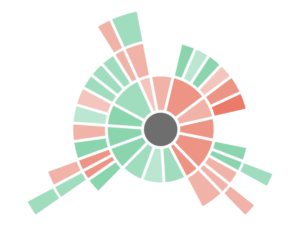 Some time ago, I described Kialo – an online service allowing participants to debate a topic proposed by one of the participants. I proposed that Kialo would offer educators a great tool for teaching argumentation which I think is an essential skill if we are ever to escape the contentiousness of our present time. The capacity to engage others with different perspectives is such a necessary skill and may possibly be a skill best developed in an educational setting. I encourage you to read the post I link above for a more complete analysis of this issue. The image I display here is a visual depiction of the debate I described in this analysis.
Some time ago, I described Kialo – an online service allowing participants to debate a topic proposed by one of the participants. I proposed that Kialo would offer educators a great tool for teaching argumentation which I think is an essential skill if we are ever to escape the contentiousness of our present time. The capacity to engage others with different perspectives is such a necessary skill and may possibly be a skill best developed in an educational setting. I encourage you to read the post I link above for a more complete analysis of this issue. The image I display here is a visual depiction of the debate I described in this analysis.
I have had a Kialo discussion/debate in play for a few months. The debate concerned the role textbooks should play in K-12 classrooms. I appreciate those who have discovered this discussion and taken the time to weigh in. It is time to move beyond the initial discussion of pro and con issues on this topic. Kialo developers propose that voting on the positions advanced should wait until a number of individuals have had the opportunity to participate and then open voting. I think now is the time.
I encourage you to vote on the logic of the debate. If you would like to add your own arguments, do so first.
To Vote
 The Kialo developers propose the following of a “standard” approach (how you see the positions taken based on your own perspective) is to work your way from the bottom up. Other approaches are useful for instructional reasons, but this is what they propose if individuals are acting on their own positions. The image at the left shows the Kialo view as it appears on my phone. The “box tree” at the top represents the structure of the debate. The very top box contains the original proposal and the boxes on the next row show arguments for and against this original proposal. The next row presents argument for and against a supporting argument.
The Kialo developers propose the following of a “standard” approach (how you see the positions taken based on your own perspective) is to work your way from the bottom up. Other approaches are useful for instructional reasons, but this is what they propose if individuals are acting on their own positions. The image at the left shows the Kialo view as it appears on my phone. The “box tree” at the top represents the structure of the debate. The very top box contains the original proposal and the boxes on the next row show arguments for and against this original proposal. The next row presents argument for and against a supporting argument.
You may not see all of the arguments actually registered. This is necessary to make the display practical on smaller screens. If you click on a box, other boxes may appear below. You continue working your way down until no more boxes are revealed.
Once you reach the bottom of a “strand”, the standard approach asks that you evaluate the impact of a claim on the claim it is intended to support (the claim to which it is linked). You are not being asked to evaluate the claim independently. Does a claim offer solid support for the claim immediately above it. The original author of each statement is assumed to have made this claim in this fashion and the assumption made is that the author positioned it appropriately to this end.
To evaluate the extent to which you feel the claim is appropriate (the system calls this voting), click on the horizontal bar at the top of a claim (see the image). This will reveal the ratings from which you can make a selection. Work your way upward making these judgments and finally “vote” on the most basic proposition.
Any structured experience is likely to have flaws and limitations. I am certain this is true of Kialo. However, my intent here is to have educators use it as intended (I am assuming my description is accurate) and to gain some insight into the proposal that this experience offers a way to think more analytically about a complex topic. The core concern about personal decision making on contentious issues is that individuals focus on their own perspective. The understand their position and their arguments, but fail to recognize the positions and related arguments for such positions offered by others. Kialo is intended to make obvious both the logic and supporting arguments of both sides.
My Kialo example is public and this would probably not be the way educators would use this tool. It is the only practical way I can provide a real example and encourage exploration. Use this link to explore the existing “debate”. I encourage you to follow the instructions above and vote as a way to explore what the various positions others have taken and to explore the potential of this tool.
41 total views
You must be logged in to post a comment.